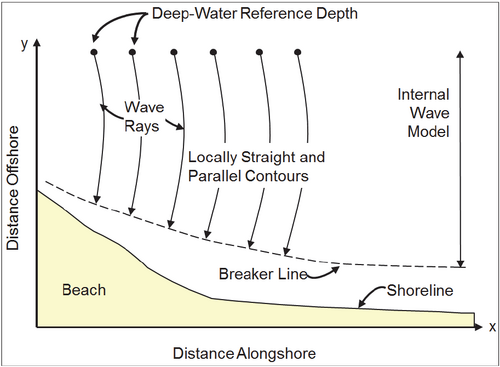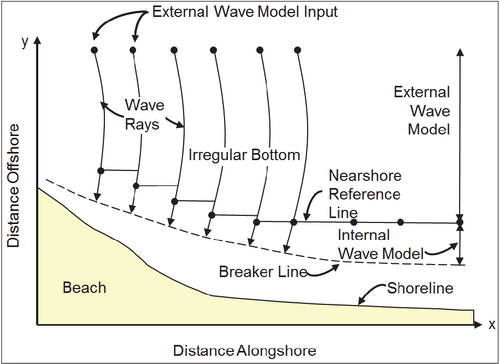GenCade:Wave Calculation
Offshore wave information can be obtained from either “numerical” gages, i.e., from a hindcast calculation, or from actual wave gages. Wave data are input to the model at a fixed time interval, typically in the range of 3-24 hr. One submodel in GenCade calculates breaking wave height and wave angle as determined from wave information given at a reference depth offshore, under simplified conditions. This submodel is called the internal wave model (not to be confused by internal waves that propagate along density fronts). If the internal wave model cannot be used, a completely independent, external wave model, may be used to supply nearshore wave information to GenCade. Usage of these internal and external models is shown in Figure 1.


The internal wave model is applicable to a sea bottom with approximately straight and parallel contours. The breaker height and wave angle are calculated at grid points starting at the reference depth of the offshore wave input (Figure 1a). If an external wave model is used (Figure 1b), it calculates the wave transformation over the actual (irregular) bathymetry starting at the offshore reference depth. Resultant values of wave height and direction at depths alongshore for which wave breaking has not yet occurred are placed in a file (by the modeler) for input to the internal wave model. These depths, taken, for example, as the depths in each wave calculation cell immediately outside the 6-m (20-ft) contour, define a “nearshore reference line,” from which the internal wave model in GenCade takes over grid cell by grid cell to bring the waves to the breaking point. If structures which produce diffraction are located in the modeling reach, the internal model will automatically include the effect of diffraction in the process of determining breaking wave characteristics.